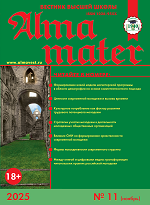Ukhova Larisa Vladimirovna
Doctor of Philology, Associate Professor
FGBOU VPO Yaroslavl state pedagogical university named after K.D.Ushinsky,
Department of The Theory of Communication and Advertising
E-mail: larissauchowa@mail.ru
Nikkareva Elena Viktorovna
Department of Publishing, assistant
FGBOU VPO Yaroslavl state pedagogical university named after K.D. Ushinsky
E-mail: enikkareva@mail.ru
Substantiated is the necessity of using of new educational technologies in the process of teaching of communicative disciplines. As fundamental educational technology, presented is method of case-study, allowing to display with maximum completeness competence level of bachelors in communicative directions. Also presented are classification of cases, their content filling, as well as elaborated are conditions and peculiarities of their using. Examined is technology for working out of cases. Shown is methodology of using of case-study during organization of business games.
Key words: competences, innovative educational technologies, interactive forms, business game, case-method.
References
1. Bagirov, I.Kh., Burykhin, B.S. Case-study as an interactive method of teaching economics students in the course of studying of the discipline of “Personnel Management” // Bulletin of Tomsk state university. Economics. — 2012. — No. 3 (19). — P. 118—129.
2. Zeldovich, B.Z. Business games in management of printing and publishing processes. — M.: Ivan Fedorov’sMGUP Publ., 2011.
3. Krivonosov, A.D. PR-text in the system of public communications. — SPb.: Rosa Mira, 2010.
4. Small innovative business: Cases of Russian companies. — M.: MAKS Press, 2013.
5. Ukhova, L.V. Interactive forms of teaching journalists // Modern education of journalists: competence approach. — M.: MediaMir, 2011. — P. 178—189.











.png)






